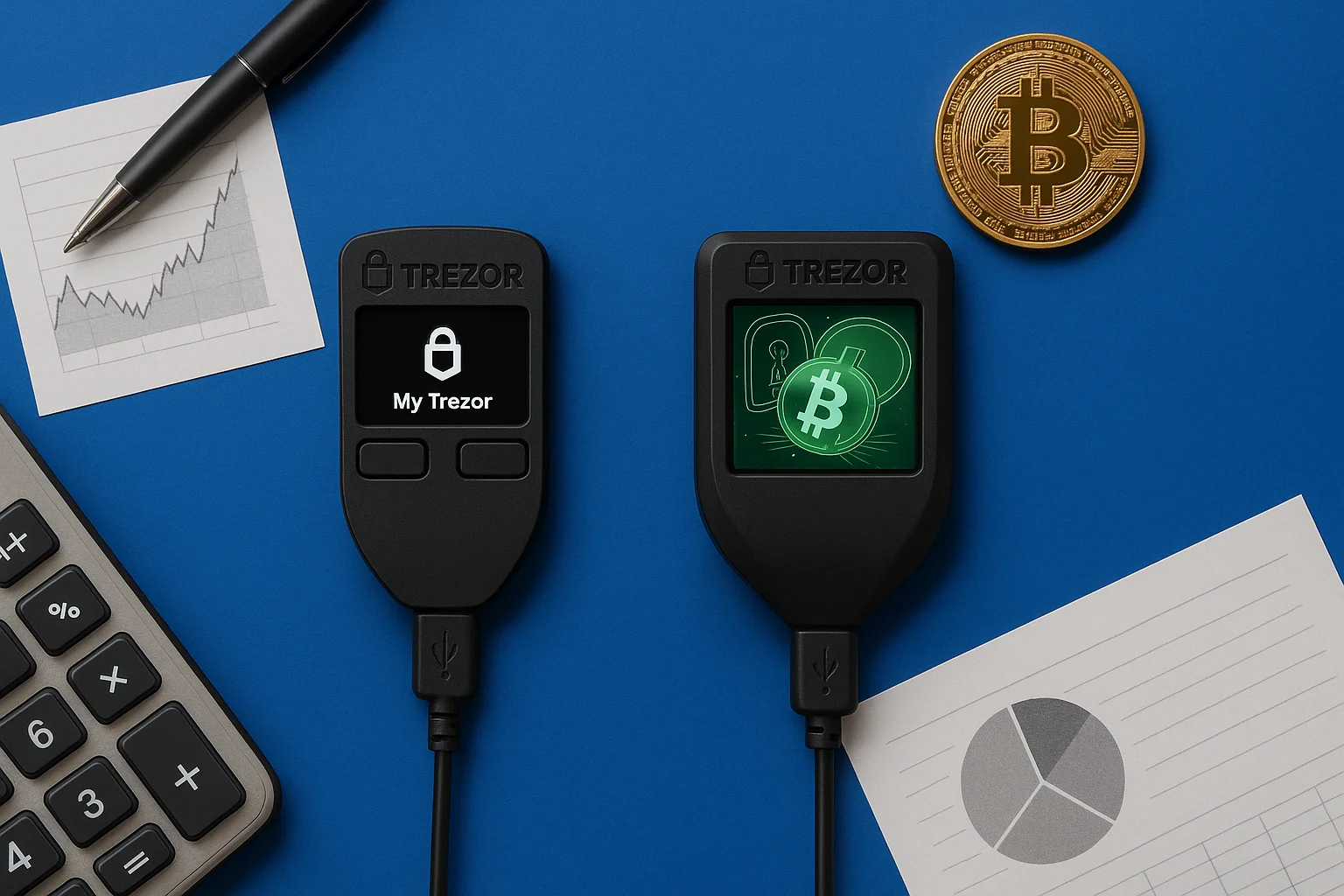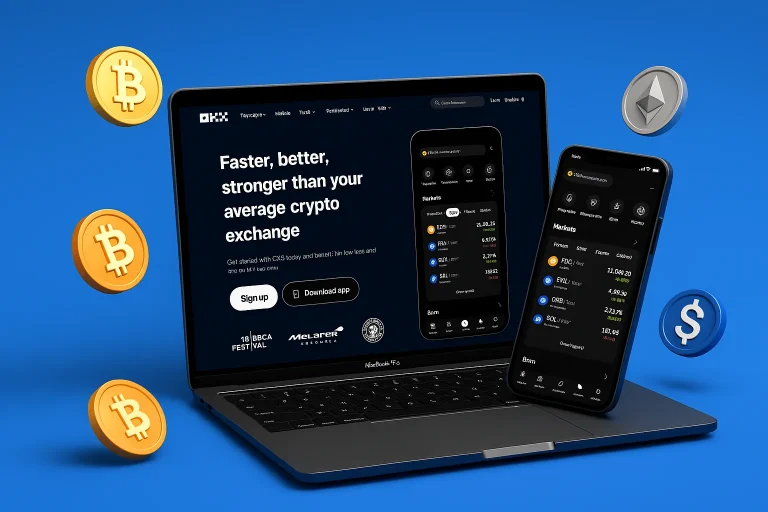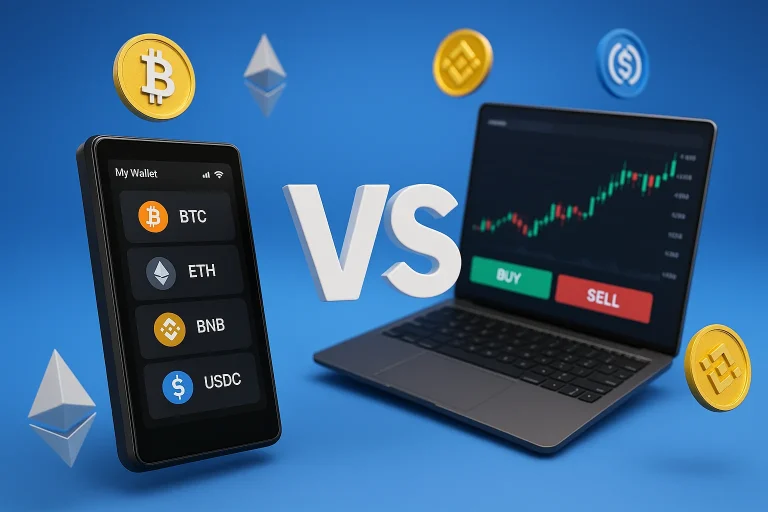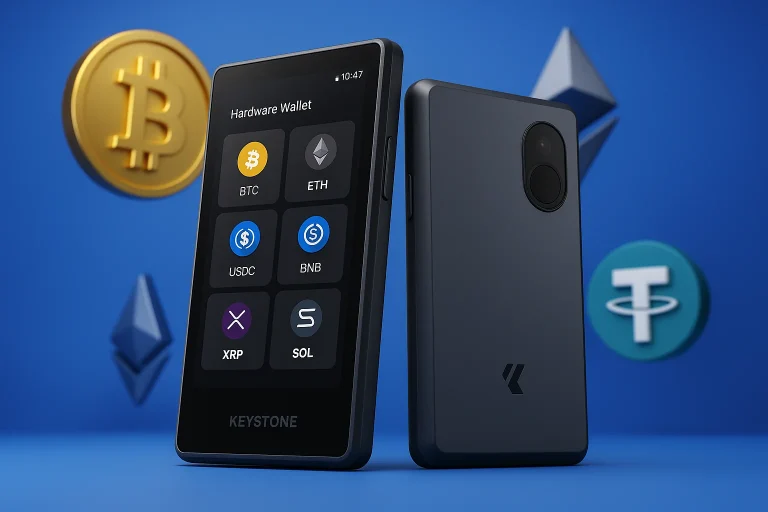The real danger in crypto is losing access or falling victim to a hack. That’s why cryptocurrency hardware wallets, such as the Trezor Model One and Trezor Model T, were created. At first glance, these two models look alike, but they’re designed for very different types of crypto users.
Choose the wrong one, and you may encounter limited coin support, clunky navigation, or compromised security protections. In crypto, those mistakes can cost you more than money; they can cost you peace of mind and expose you to online attacks.
This guide cuts through the noise with a clear, side-by-side comparison of Trezor Model One vs. Model T, helping you choose the crypto wallet that safeguards your digital assets and aligns with your investing style.
Table of contents
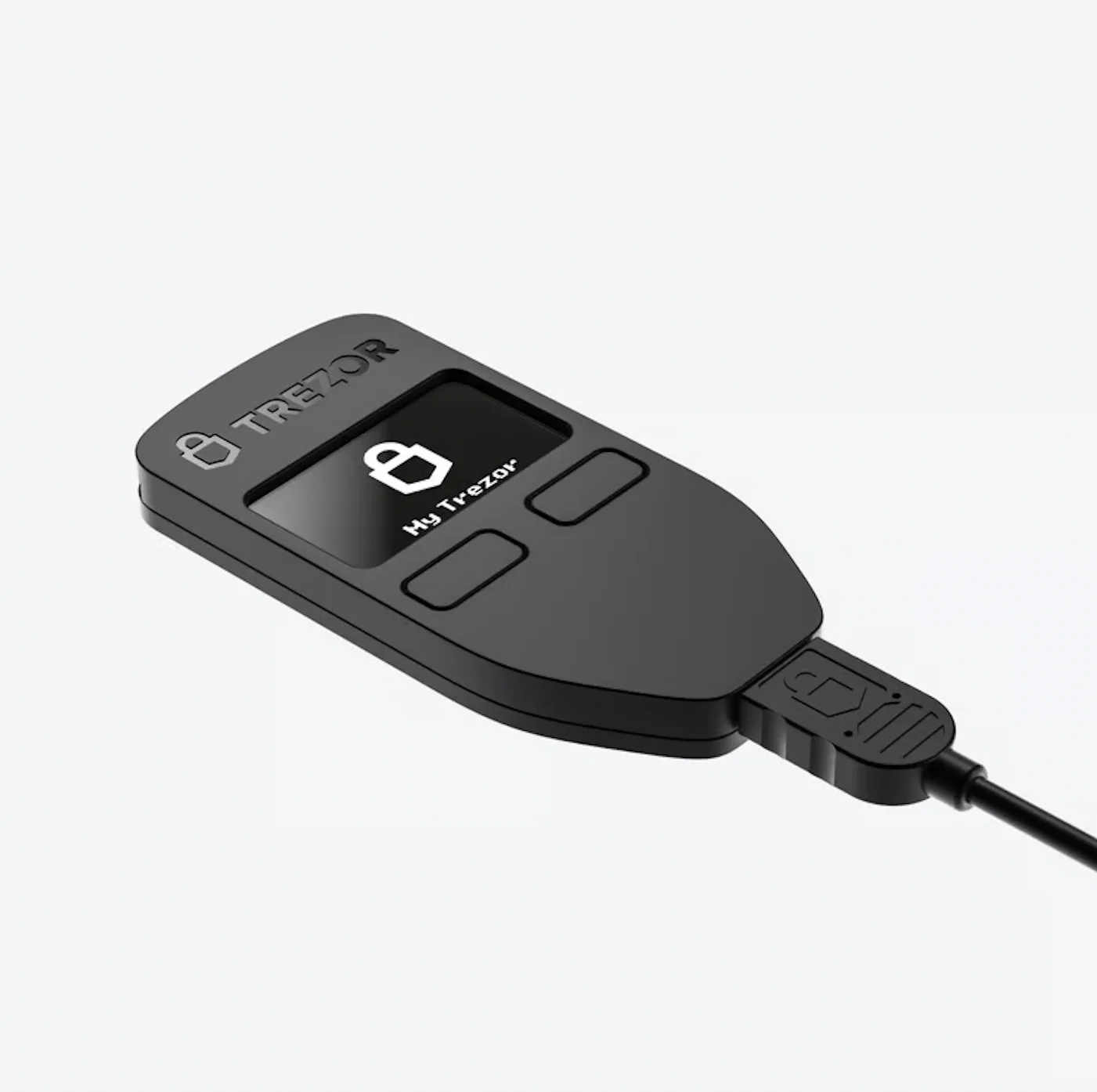 Trezor Model One |
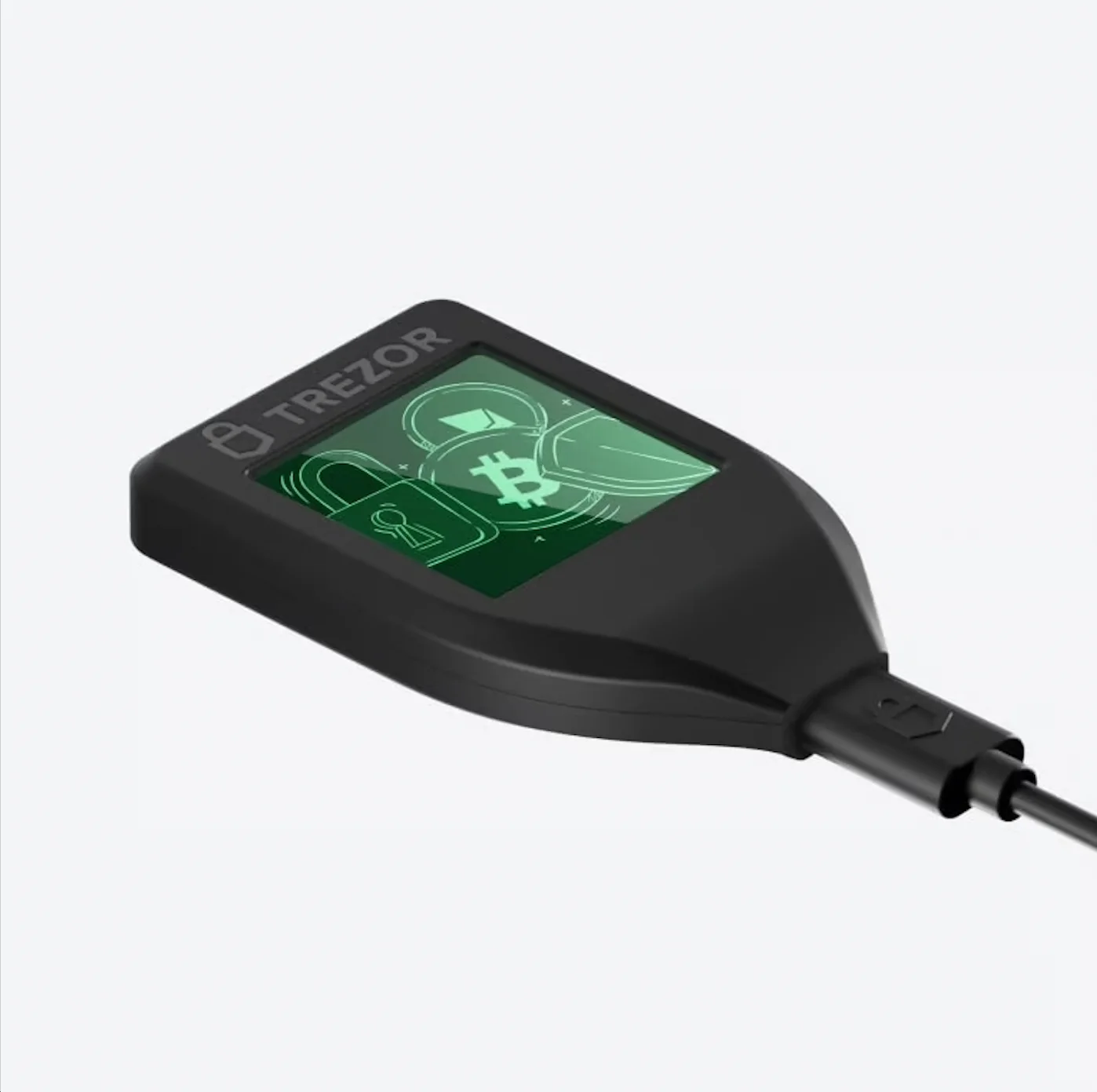 Trezor Model T |
|
|---|---|---|
| Best For | Beginners, Bitcoin-only users | Advanced investors, altcoin & DeFi users |
| Display | Two-button & basic screen | Full-color touchscreen |
| Security | PIN, passphrase & recovery seed | PIN, passphrase & recovery seed |
| Coin Support | 1,000+ assets (no XRP, ADA, XMR) | 1,400+ assets incl. XRP, ADA, XMR, NFTs |
If you’re still unsure if you should get a Trezor model, be sure to read the detailed review of the Trezor Model T vs. Ledger Nano X.
Trezor Model One: Highlights
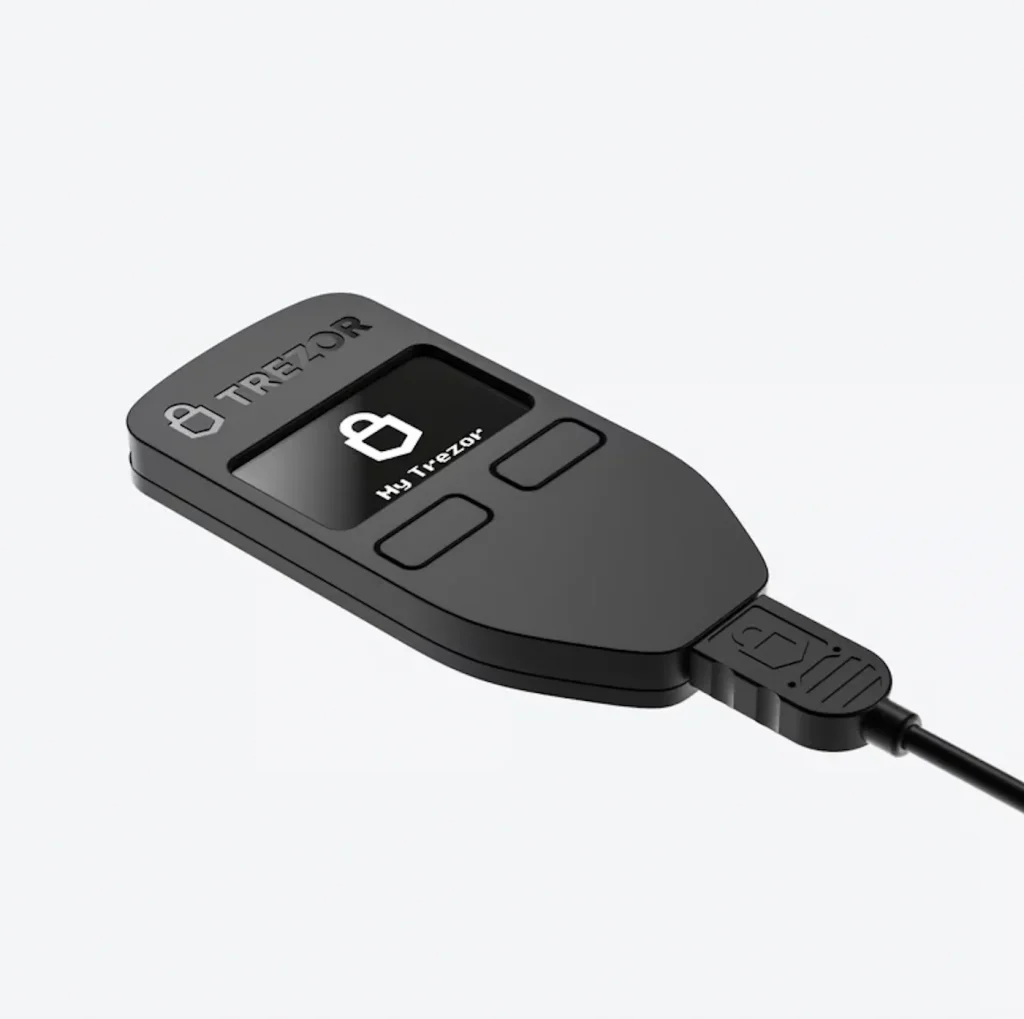
The Trezor Model One is a small and lightweight wallet, measuring 60 × 30 × 6 mm and weighing only 12 grams. Its compact hardware design makes it one of the most portable hardware wallets available, ideal for everyday use.
The device connects via USB 2.0 with a Micro-B cable and works with Windows, macOS, Linux, and Android (through OTG support). It runs on a 120 MHz ARM Cortex-M3 processor and features a 128×64 OLED screen.
The display is clear enough to show complete crypto addresses during transactions, so you can always verify details before confirming. Confirmations are made with physical buttons, which keep interaction simple and consistent even on older desktops or laptops.
Like every Trezor, the Model One runs on open-source firmware regularly audited by the community; Trezor’s open source code adds transparency and trust. It also integrates with popular third-party wallets such as Electrum, Mycelium, and Exodus, and it can act as a password manager for encrypted credentials via Trezor’s browser extension.
Trezor Model T: Highlights
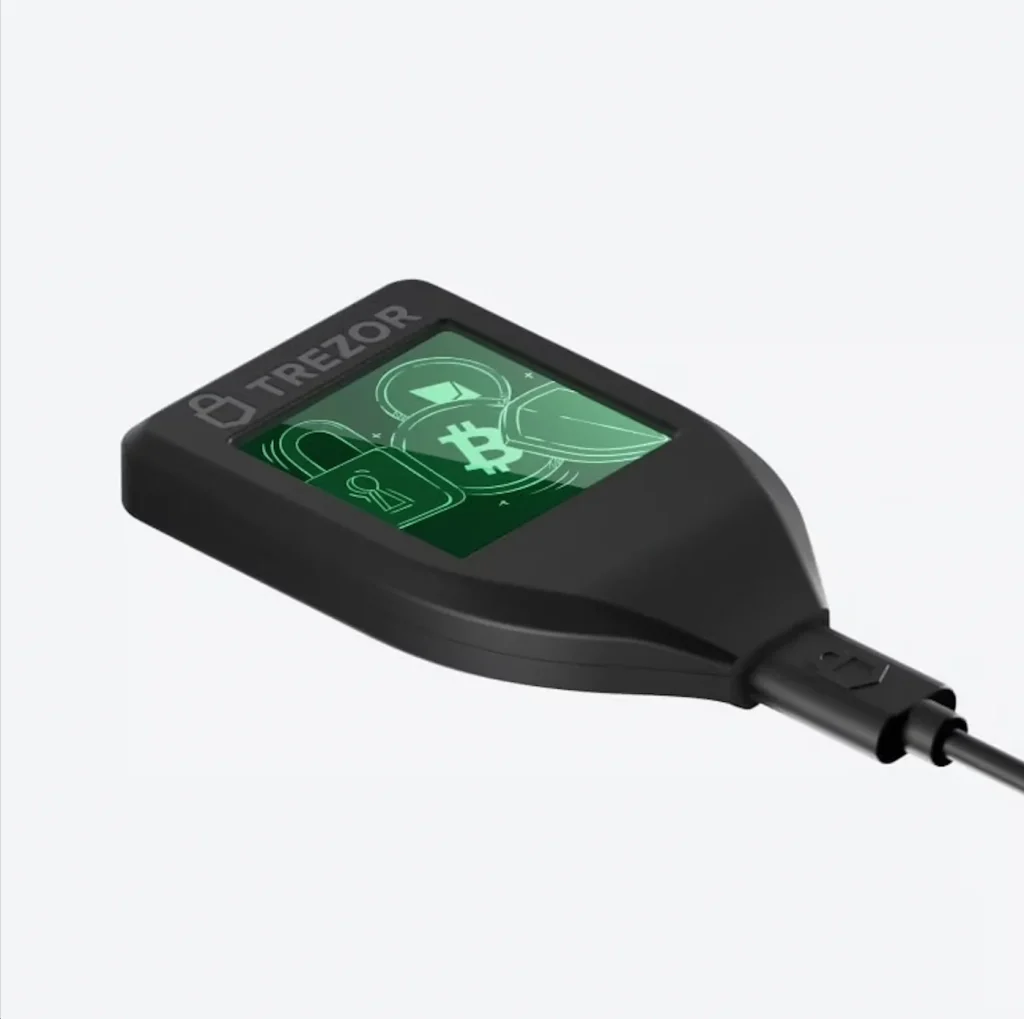
The Trezor Model T builds upon the basics of the Model One, upgrading them with stronger hardware and modern technology. It measures 64 × 39 × 10 mm, weighs 22 grams, and feels sturdier while still portable.
The device connects via a modern USB-C port and is compatible with Windows, macOS, Linux, and Android. You can also access it directly from your browser using WebUSB.
Inside, the Model T is powered by a 168 MHz ARM Cortex-M4 processor, providing faster cryptographic performance and smoother handling of complex transactions. Its main highlight is the full-color screen, which lets you enter PINs and passphrases directly on the device for safer confirmations.
Another advantage is the built-in microSD slot, which enables encrypted storage, stronger backup options, and great additional features for power users.
Like the Model One, it utilizes fully open-source firmware; however, its broader integrations with MetaMask, MyEtherWallet, and other Web3 platforms make it particularly well-suited for investors actively engaged in DeFi and NFTs.
Additionally, consider this Trezor Model T in-depth review for a more comprehensive perspective.
Feature Comparison: Trezor Model One vs Model T
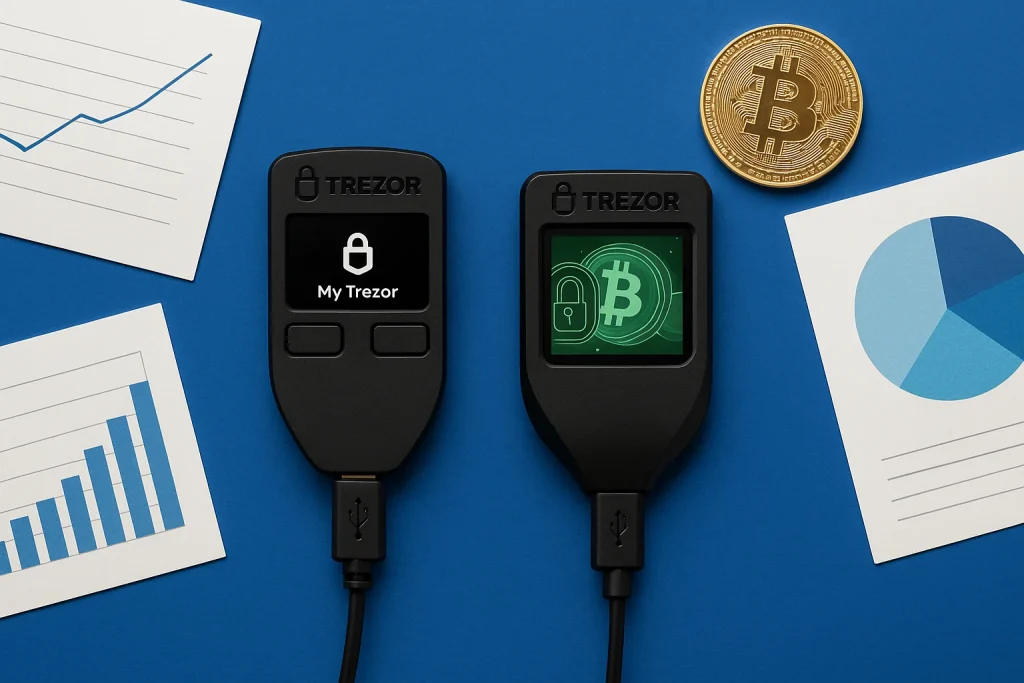
When comparing the two devices, it becomes clear that Trezor designed them for different user needs. Below are the key differences that matter most when deciding which wallet to buy.
1. Security & Protection
Trezor Model One: Provides the core security features you’d expect from a hardware wallet, including offline storage, PIN codes, passphrases, and a recovery seed. These tools are more than enough for casual users or Bitcoin-only holders.
Trezor Model T: Adds Shamir Backup to split the seed into shares, raising resilience against loss or theft and making it harder for sophisticated attackers to compromise recoveries.
Verdict: Both are secure; Model T offers extra resilience for larger crypto assets, stacks and diverse portfolios.
2. Cold Storage & Access Control
Trezor Model One: Uses two buttons and a small OLED screen for confirmations. While reliable, the navigation can feel limited when entering passphrases or approving transactions frequently.
Trezor Model T: Replaces buttons with a full-color touchscreen, which allows you to type PINs and passphrases directly on the device. This eliminates the need to use a computer keyboard, reducing exposure to malware and making interactions faster.
Both Trezor devices work fully offline; typical threats would require physical access to the unit.
Verdict: Model One works fine occasionally; Model T shines for active traders and DeFi users.
3. Supported Cryptocurrencies
Trezor Model One supports over 1,000 coins and tokens, including Bitcoin, Ethereum, and most ERC-20 assets; it covers major coins, but the list of supported coins does not include XRP, Cardano (ADA), or Monero (XMR).
Trezor Model T expands support to 1,400+ assets, covering everything the Model One offers plus the missing altcoins, NFTs, and DeFi tokens. This makes it more suitable for diversified portfolios and Web3 adoption.
Verdict: Model One is enough if you only hold Bitcoin or Ethereum. For multi-chain investors, Model T is the clear winner.
4. Usability & Software Ecosystem
Both run the Trezor Suite app for portfolio management, firmware, and coin tools. Model T integrates more smoothly with MetaMask/MyEtherWallet for Web3, and the screen reduces input errors.
Verdict: Both are user-friendly; Model T is better for advanced DeFi/NFT activity.
5. Price & Value
Trezor Model One: Typically priced around $49, it’s one of the most affordable hardware wallets. This makes it perfect for beginners or those needing basic Bitcoin storage.
Trezor Model T: Costs around $129, reflecting its advanced features, stronger recovery system, and broader crypto support. While the upfront cost is higher, it’s often seen as a long-term investment for serious crypto holders.
Verdict: Model One = best value for entry-level users. Model T = premium choice for experienced investors.
Trezor Model T vs Model One: How to Set Up?
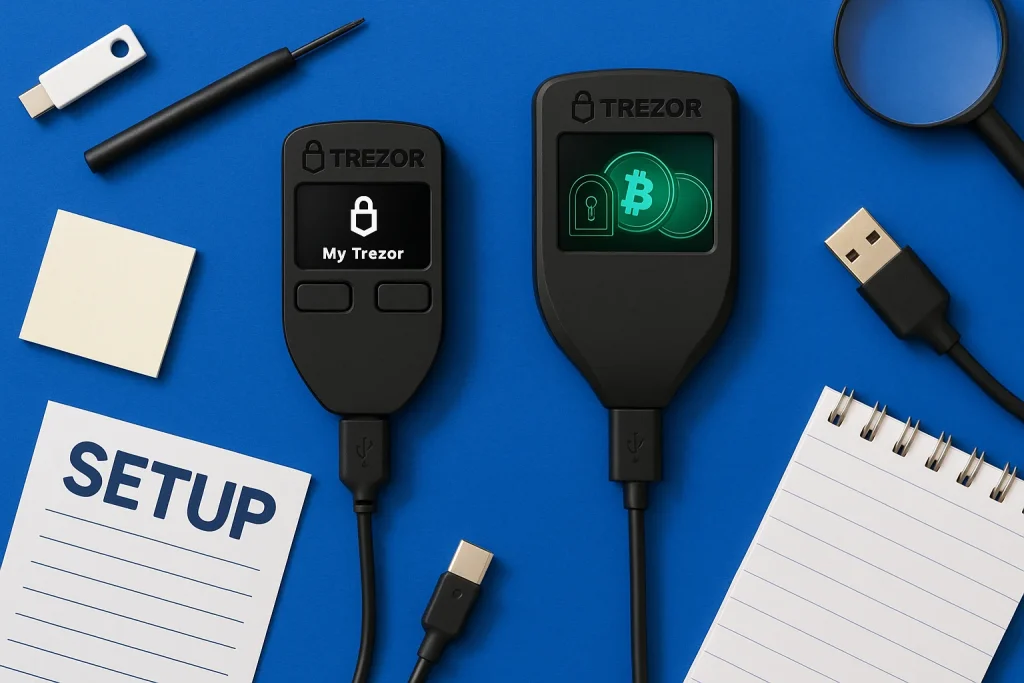
Setting up a Trezor wallet takes less than 10 minutes, and the process is similar for both devices. The main difference is how you interact with them: the Model One uses two buttons and a small screen, while the Model T relies on its touchscreen for smoother navigation.
Step 1: Connect the Device
- Model One: Plug it into your computer using the included Micro-USB cable.
- Model T: Use the USB-C cable to connect. Both also support Android phones with an OTG adapter.
Step 2: Install Trezor Suite
Download and install Trezor Suite (desktop or mobile). This is the leading software you’ll use to manage accounts, send and receive crypto, and update firmware.
Step 3: Create a New Wallet
When you first connect, choose “Create New Wallet.” The device will generate a secure recovery seed.
- Model One: The 24-word seed, often called a recovery phrase, appears on the small OLED display, and you confirm using the two buttons.
- Model T: The seed is displayed on the color touchscreen, making it easier to read and verify.
Step 4: Secure Your Recovery Seed
Write down the recovery seed on paper (never store it digitally). For Model T, you can also enable Shamir Backup, splitting the seed into multiple parts for extra protection.
Step 5: Set a PIN
Create a secure PIN to prevent unauthorized access.
- Model One: PIN input is done through your computer, but you confirm the digits on the device’s screen.
- Model T: Enter the PIN directly on the touch screen, which is faster and reduces the chance of keyboard-based malware intercepting input.
Step 6: Add Accounts and Start Using
Once setup is complete, add your preferred accounts (Bitcoin, Ethereum, ERC-20 tokens, etc.) to Trezor Suite. You can send, receive, and monitor your crypto portfolio from here. Trezor can also be a backup device for restoring an existing seed if your primary unit is lost.
Both wallets are easy to set up, but the Model T’s touchscreen and Shamir Backup make the process more intuitive and secure, especially for users managing multiple assets.
You can also enable FIDO2/WebAuthn for account logins to add two-factor authentication secured by your Trezor.
Long-Term Considerations for Crypto Investors
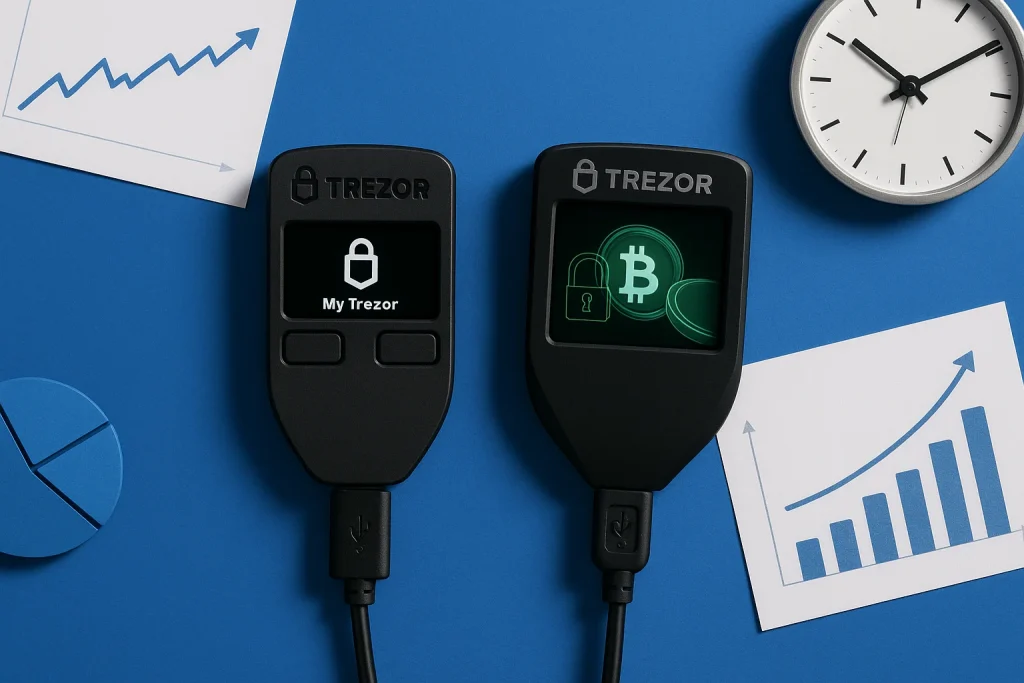
Choosing between the Trezor Model One and Model T isn’t just about today’s features and how well the wallet will serve you over the years. Hardware wallets are designed to last, but a few long-term factors are worth considering.
1. Security Longevity
Both devices rely on strong offline protection, but long-term investors must consider evolving threats.
The Model T’s Shamir Backup provides added resilience if recovery methods ever become weak. The touchscreen also makes it easier to adapt to potential software changes without relying on a computer keyboard, which can be a common attack vector over time.
2. Firmware Updates
Trezor is known for regular firmware updates, which improve usability and patch vulnerabilities. Because the Model T has stronger hardware (faster processor and microSD slot), it is more capable of handling future updates and new features.
While the Model One will continue receiving updates, it may eventually become limited in its support of emerging technologies like complex DeFi protocols or advanced multi-sig schemes.
3. Future Asset Support
The crypto landscape evolves quickly. New blockchains, tokens, and standards emerge every year. The Model T’s broader compatibility means it is more likely to support these assets, while the Model One’s limited scope may leave advanced users needing an upgrade sooner than expected.
4. Device Durability
Both devices are lightweight and durable enough for daily use, but physical longevity also matters. The Model One’s buttons can wear down with heavy use, while the Model T’s touchscreen provides a smoother, more modern interface that ages better for frequent transactions.
5. Resale and Futureproofing
Although most users keep their wallets for years, resale value can matter if you plan to upgrade later. The Model T retains higher resale value due to its premium features and broader market demand. Investors who choose it up front may save money in the long run by avoiding an early replacement.
FAQ
If you lose your Trezor, your funds remain safe if you still have your recovery seed. You can restore your wallet on a new Trezor or another compatible hardware wallet. Without the recovery seed, however, your assets cannot be recovered.
Yes. Offline keys, on-device entry, and Shamir recovery make it a robust long-term choice for BTC storage and secure login to supported services.
The main risk of a cold wallet is losing your recovery seed; without it, your funds are unrecoverable. Unlike hot wallets, cold wallets protect against online hacks but entrust the user with the full responsibility of backup and physical security.
Trezor doesn’t have built-in staking, but it connects with third-party wallets like Exodus, Yoroi, or MetaMask for that purpose. This allows you to stake coins securely while keeping private keys offline.
Yes. Trezor can be set up in multisig configurations using apps like Electrum, where multiple devices or users must approve a transaction. This makes it suitable for businesses or shared crypto funds requiring extra control.
Final Verdict: Trezor Model One or Model T?
If you’re choosing between Trezor Model One vs Model T, decide based on how you invest, not just specs.
Model T’s main advantage is broader asset support, on-device input, and Shamir recovery, which scales as your holdings grow. Model One remains a reliable starter for BTC and light portfolios.
- Pick Model One if you want affordable, transparent security for a few crypto assets and occasional transactions.
- Choose Model T if you manage many chains, interact with Web3, or expect your needs to grow. It pairs modern technology with features that protect and simplify the management of Trezor devices and your crypto assets over time.
Either way, both Trezor hardware wallets provide strong protection for crypto assets, far exceeding exchange hot-wallet risk.

